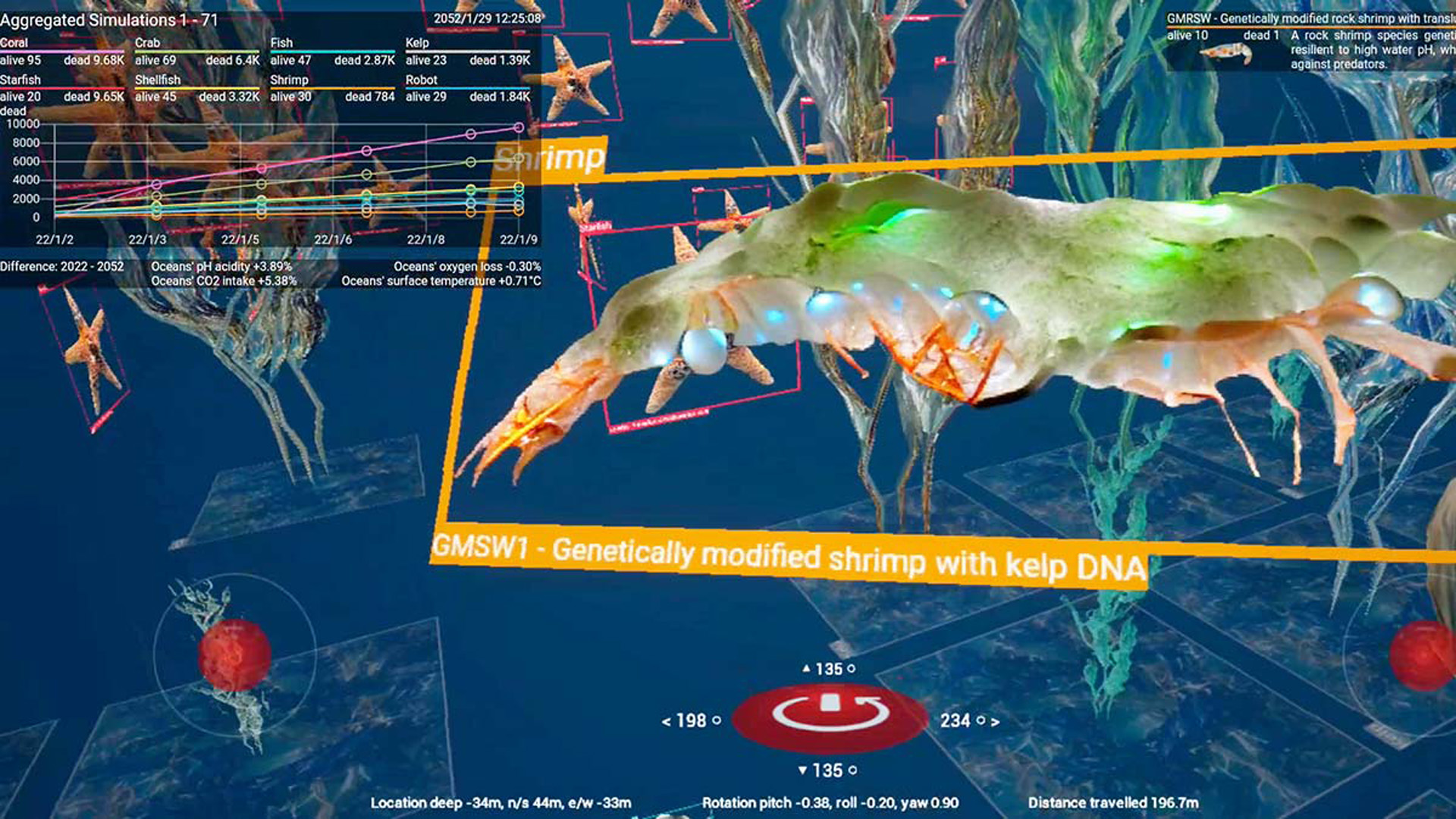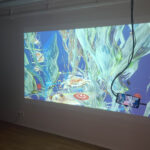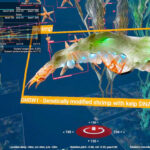“Yanto” by Shervin Saremi, Iris Qu Xiaoyu, Marc Lee
Title:
- Yanto
Artist(s) and People Involved:
Exhibiting Artist(s):
Symposium:
- ISEA2023: 28th International Symposium on Electronic Art
-
More artworks from ISEA2023:


Venue(s):
Artist Statement:
Exhibition. Le Tétris, Le Havre, June 14 – 24
Iris Qu Xiaoyu, Marc Lee & Shervin Saremi are ISEA2023 selected artists
A digital journey in the ocean to meet marine fauna.
YANTO – yaw and not tip over is a speculative piece on the future of aquafarming. The narrative sets in a speculative fish farm 30 years from now, where artificial intelligence and synthetic biology work together to create an optimized environment for farmed species. A simulator powered by artificial intelligence creates hybrid species to balance a delicate ecosystem in this imagined scenario.
Given the dire projection on global warming and ocean acidification, humans increasingly look to technology for creative solutions. In Under a White Sky, author Elizabeth Kolbert pointed to “control” as the fundamental false logic of the Anthropocene: “If control is the problem, then, by the logic of the Anthropocene, still more control must be the solution.” As we navigate an increasingly delicate political atmosphere, techno-solutionism dominates conversations about climate change.
Artificial intelligence has become the star of the techno-solutionist way of thinking with its promises of creative problem-solving packaged in a “black-box technology”. The technology comes with its own human-imposed biases – what do we optimize, and who do we optimize for? When we try to compute an uncomputable system, whose needs do we consider and prioritize? YANTO looks at some of the technologies we use in aquafarming today and imagines a future where artificial intelligence takes them to an extreme.
In Unruly Appetites: Salmon Domestication “All the Way Down” (Lien, 2017), Marianne Elisabeth Lien investigated the delicate dance of balancing an aquafarm ecosystem: to reduce sea lice in a crowded salmon population, fish farmers introduced wrasse as a cleaner species, which in turn requires “artificial kelp” (plastic stripes in this case) to act as a habitat. In introducing the species, humans learn to balance the system for their maximized profit. We already use machine learning technology for species identification in the underwater environments – and it’s not hard to imagine a not-so-distant future where machine learning does the balancing act for us, and “optimize” for human objectives.
Each speculative species in the environment has a backstory rooted in real-life scenarios: the shellfish species that would slowly lose their abilities to form shells in an acidified water environment; the tropical species that would lose their vibrant colors in extreme heat; the fish species would lose their sense due to high PH. We imagine a future where technologies like 3D printing, CRISPR, and synthetic biology play a part in modifying species for a higher chance of survival – shellfish with 3D printed parts, tropical fish with artificial fins, species with kelp DNA for lower PH. With an image generative adversarial network – VQGan, we created these hybrid creatures based on their real-life counterparts. Not photoshopped, but rather generated by artificial intelligence based on speculative descriptions and countless images from the internet.
Audience Experience and Impact
The audience interact with the installation through a mobile interface and navigate through a speculative underwater environment with a smartphone. This virtual environment is endless and can be navigated in every direction. The sonic sound experiences are specially composed for this aquafarming simulation and respond to all movements and navigation modes. In the exhibition space, the display of the smartphone could be projected onto a large wall.
Through the point-of-view of an A.I. simulator, the audiences are invited to swim with the engineered/mutated species, and create new simulations to observe the changing ecosystem. When the audience approaches a species, they will have the chance to learn about the species’ backstory. We hope to invite the audience to investigate our tendency to engineer nature and treat ecosystems as a system that can be fixed.
Credits
Iris Qu Xiaoyu, Marc Lee and Shervin Saremi (sound)
https://xiaoyu.ooo/w/yawandnottipover







